The 5 most used microcement colours in decoration
The microcement is undeniably, one of the biggest trends in interior design. This is due to its versatility and ability to adapt to all styles of decoration. A versatility that is partly due to the wide variety of colours of microcement available, which allow for creating unparalleled decorative finishes.
In this article we reveal to you what are themicrocement coloursmost used and how to apply them in different spaces, to get the most out of them.
Microcement colours: much more than just white microcement and grey microcement
When thinking about microcement and colours to decorate different spaces, the first shades that undoubtedly come to mind are grey microcement and white microcement. The two microcement colours preferred for covering all types of surfaces both indoors and outdoors.
Just because they are the most used microcement colours, doesn't mean they are the only options. In fact, the range of microcement colours goes much further. Whatever the need and decorative style you want to give to a specific environment, there is a microcement colour that fits perfectly.
If you have doubts about which colour you prefer, below we give you 4 keys so you can choose the microcement colour that you can get the most out of the space you want to renovate.
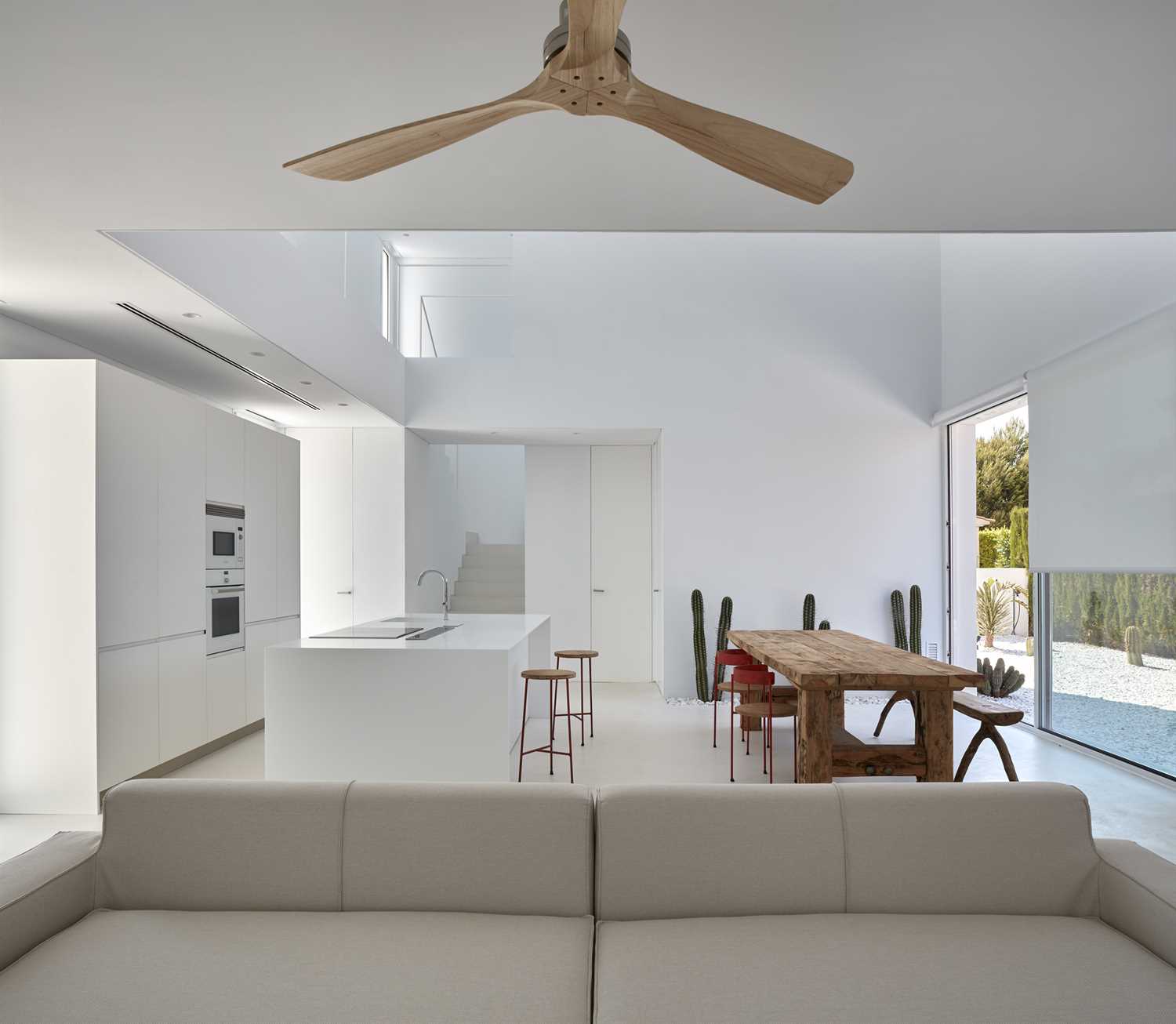
4 Keys to choosing the colour of microcement according to the space
Before choosing which microcement colours are most suitable for the different rooms, it is necessary to do a small analysis of the characteristics of the specific space that we want to decorate with the coloured microcement.
Take note of our 4 recommendations that you must keep in mind to definitely get the microcement colour right.
1. What type of light does the room have?
Natural light is key to choosing the colour of microcement. If the space is exposed to the sun for many hours a day, you can choose darker colours; but if on the other hand it is an interior room that does not receive direct light from outside, it is better to opt for more subdued and less saturated tones.
If natural light is important when choosing the colour of microcement, artificial light is not far behind. The type of device or bulb that will be used to illuminate the room during the hours it does not receive natural light should also be taken into account.
This is key, especially in winter. It must be kept in mind that cold LEDs reduce the vividness of colours, while warm LEDs accentuate that warmth and halogens provide a white light that enhances colours.
2. Follow the 60 - 30 - 10 rule or not, to choose the colour of microcement
Many decoration and interior design experts recommend using a maximum of 3 colours to decorate a space, where 60% corresponds to the base colour; 30%, to the complementary; and 10%, to the accent. A rule that can even encompass a fourth colour if one of them is neutral.
But, the truth is that the coloured microcement with its various textures enriches much more than a simple flat colour. This allows to reduce the number of microcement colours to be used in the room to 2 or even 1 and the final result is just as impressive.
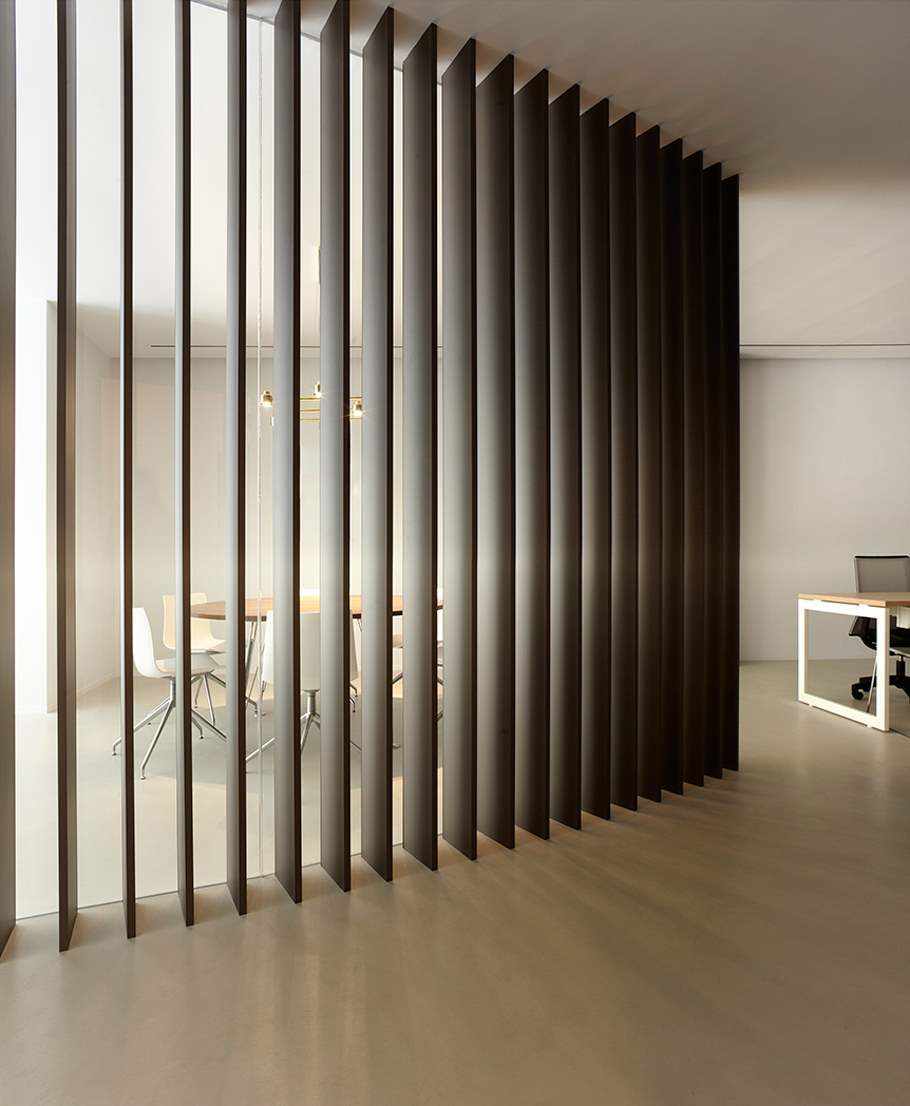
3. The size of the room, key for the colours of microcement
The dimensions of the room are decisive in finding the most suitable microcement colours. While opting for darker shades considerably reduces the space, lighter and neutral shades favour the breadth of the space.
This is what happens with light microcement colours, whose visual sensation is of much greater amplitude. For this reason, we advise that to give greater prominence to spaces of reduced dimensions, a neutral and light microcement colour should be used, such as white microcement. This will make the room appear much larger than it actually is.
If to this we also add the ability of microcement to reflect and enhance natural light, it makes it an ideal material for small rooms such as the bathroom.
4. Different environments, different microcement colours
Each space requires microcement colours that go in unison with the atmosphere and style you want to give it. It's not the same to coat a living room with coloured microcement for example than a kitchen, right?
In the case of the bedroom, the aim is to convey a sense of tranquility and calm through the decoration. Therefore, it is recommended to use microcement colours of warmer and softer shades, as they are the most suitable for creating that desired restful and relaxing atmosphere.
On the contrary, if it is a room where children play, the microcement colours that are more intense and lively are more suitable.
On the other hand, for more modern and industrial styles, the grey microcement and black microcement stand out, which combined according to the rest of the characteristics of the room that we have explained above, provide light and personality in a balanced way.
5 microcement colours that set the trend
To get the most out of microcement, it is essential to choose the colours well, as it is not just about changing the tone of a specific room, but about giving it its own identity.
Therefore, we reveal to you the 5 most used microcement colours in interior and exterior decoration. 5 microcement colours that are trending and with our advice, you will learn to combine them correctly.
Black microcement, black is back
Black is the quintessential elegant and sober colour. This, coupled with the texture achieved by using black microcement, allows for a touch of sophistication to the different environments of your home.
If you opt for black microcement and want to apply it to an entire wall, do it in a room with high ceilings and good lighting. And to balance the strength of the black microcement, combine it with less intense tones such as white, grey or beige is a great success.
While for some cultures the colour black conveys sadness, when applying black microcement a texture is achieved that gives it life and its own identity. In addition, it combines perfectly with small decorative elements in bright colours and you will counteract the sobriety of the colour.
Black microcement fireplaces to accentuate the living room
If there is a fireplace in the living room or lounge, it is highly advisable to cover it with black microcement. In this way, it is enhanced and given prominence, creating a focal point on it and at the same time achieving a contrast with the rest of the elements of the space that is most attractive. In addition, a black microcement fireplace is perfect for hiding possible soot or smoke stains from view.
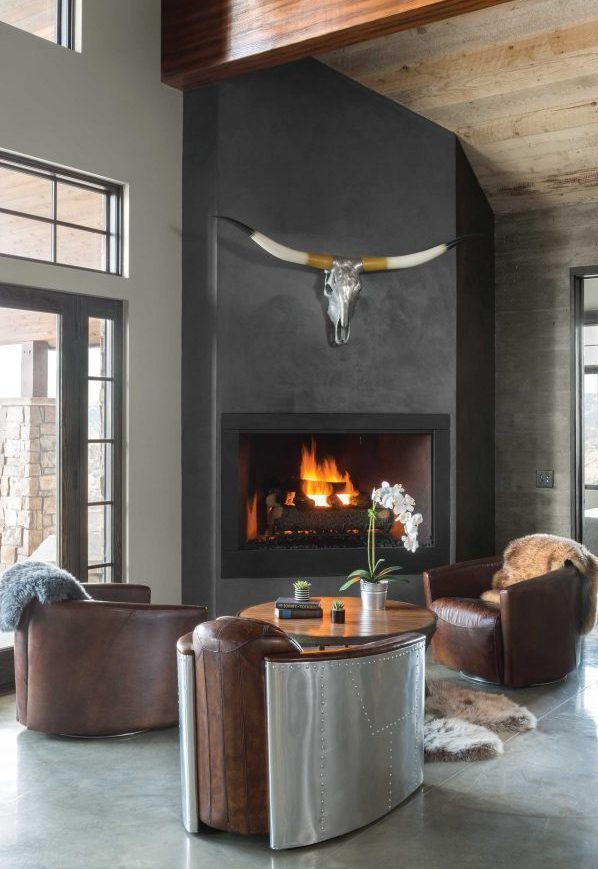
Grey microcement to achieve an industrial style
In the range of microcement colours, grey is one of the most used due to its great versatility and adaptation to many styles, but undoubtedly, it is in the industrial style where on more than one occasion it is the protagonist par excellence.
The grey microcement is perfect for floors, ceilings, walls as well as stairs and furniture. Moreover, due to the microcement's ability to reflect light, the sense of clarity will increase and enhance the diaphanous style.
Combining different shades of grey microcement will result in a contrasting decoration. A microcement colour that perfectly matches with wooden, leather or iron furniture.
Grey microcement floors, the most demanded
When it comes to changing the floor, both in a home and in large areas and shops, the grey microcement becomes the undisputed star colour. This is due to its industrial and sophisticated appearance, at the same time it forms a colour that fits like a glove in any environment and decorative style.
That's why grey microcement floors are the most demanded to renovate with microcement pavements of homes and businesses.
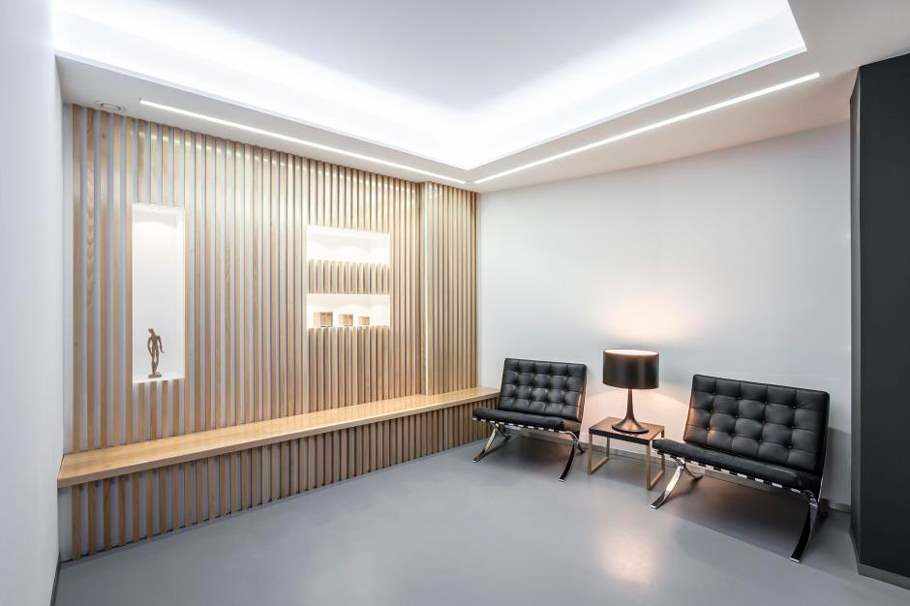
White microcement, double brightness
We love everything about white microcement; its brightness, timelessness, versatility and ability to adapt to all decorative styles. This colour is associated with meanings such as purity, order, simplicity and cleanliness, making it perfect for all rooms.
There's no need to fear combining it with other microcement colours available. You will almost certainly achieve a winning composition. If what you're afraid of is that the room will end up boring and cold, don't worry; there are countless shades of white microcement that will allow you to escape from the total white and will manage to provide more of a homey feel.
For the furniture, wood finishes and natural fibre materials such as raffia or linen will help to enhance the warmth and compensate for the brightness that the white microcement gives off.
White microcement for dream pools
Thanks to the fact that microcement is a thin coating between 2 and 3 mm, it can be applied to any existing surface to renew it, as in the case of an outdated pool.
On the other hand, if you start your project from scratch, white microcement pools will be your best option as this material adapts to any surface to create the most unimaginable shapes with rounded, straight, semicircular edges, and so on.
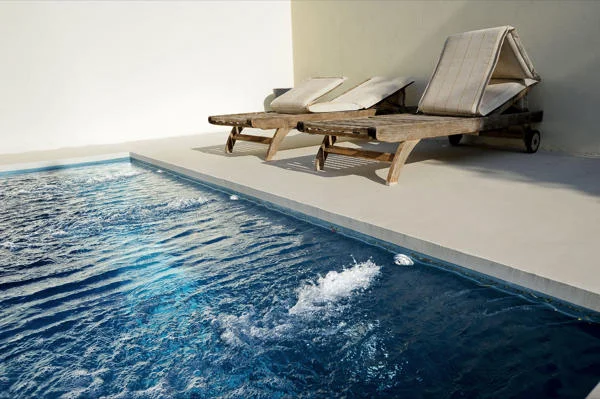
Visually multiply the square metres with the white microcement in the bathroom
When square metres are scarce, white microcement is the most accurate solution for a bathroom. White microcement is perfect for visually enlarging a space, as we have previously explained, microcement has the ability to reflect and enhance natural light, even more so if it is a light colour.
Impeccable walls with white microcement
Although the king of microcement is the floors, it is increasingly common to coat the walls with microcement. In this sense, white microcement can be one of the smartest options because it enhances the brightness of the space and also provides a sense of calm and purity.
Beige microcement, always a success in minimalism
The great rival of white microcement, is undoubtedly beige microcement. If light tones are wanted for a space but it already overflows with natural light, beige microcement on the walls will be one of the best alternatives to avoid a look that's too sterile and shiny.
In addition, one of the virtues of beige microcement is that it combines with both cool and warm colours. This neutral and elegant microcement colour will fit in any room, whether traditional or modern.
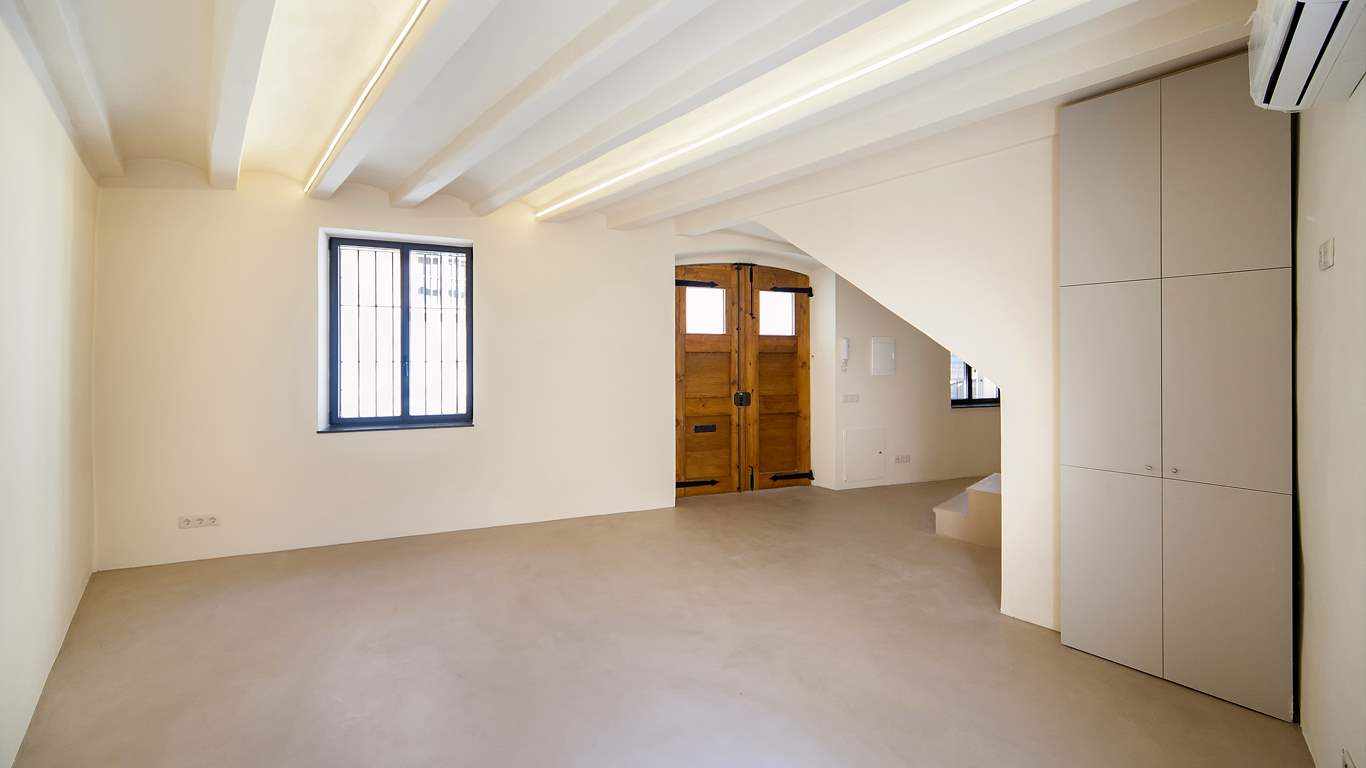
Beige microcement for bathrooms: clarity and warmth
The beige microcement for bathrooms is a great alternative to tiles. By coating the bathroom walls with this colour of microcement, the warmth of the room will be enhanced without having to resort to the always used and traditional tiles. A microcement colour that will intensify a calm and relaxed atmosphere, worthy of a spa.
To add a touch of colour to the bathroom, in addition to using beige microcement for the walls, it's a very good idea to add some indoor plants or a set of towels.
Sand-coloured microcement, the most natural colour
If before we were talking about beige microcement as an indispensable neutral, sand microcement is not far behind in the range of most used microcement colours.
It's ideal to combine it with organic materials such as stone and wood to give it a very cosy final touch. Rugs with natural fibres or warm colours are a sure hit when it comes to combining the sand microcement in the rooms.
Also, thanks to the texture provided by the application of sand microcement, the sensation will be of such harmonious finishes that they will blend in with the rest of the elements of the house. Undoubtedly, it is the colour of microcement that cannot be missing, especially if the space to be decorated is immersed in a natural environment.
Now that you have discovered the most interesting microcement colours and everything necessary to combine them, you are closer to achieving the decorative style you have always wanted.
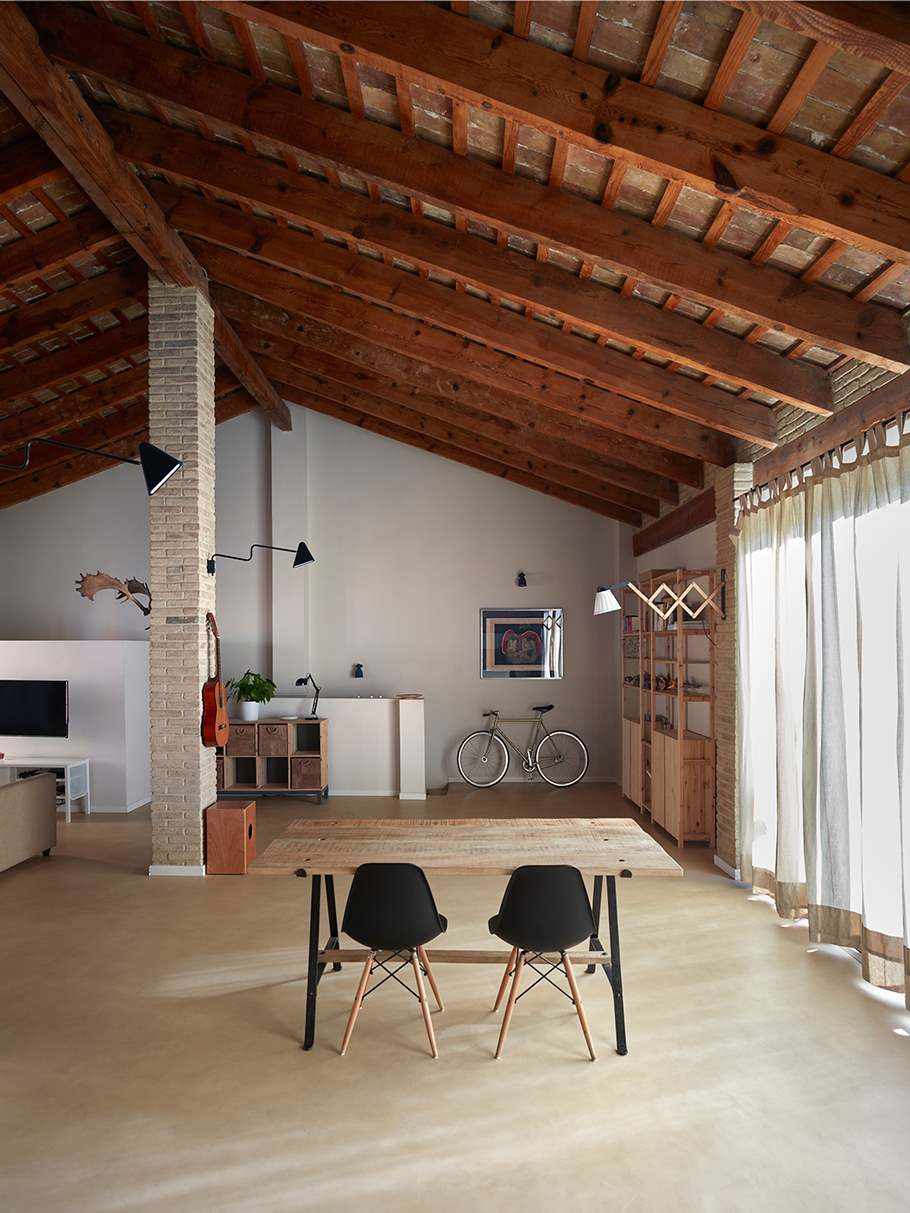
Topciment: infinite range of microcement colours
At Topciment we are specialists in microcement. We have a wide range of microcement colours that adapt to all rooms and spaces perfectly. Microcement colours that cover all chromatic shades that exist and are yet to exist, and that adjust to the particular needs of each individual.
What are you waiting for to know our microcement colour charts? We have up to three. A first one for our two-component and one-component microcements, a second one for our ready-to-use or pasted microcement and a last one exclusive for swimming pools.
Subscribe to our newsletter
Receive in your email tips for the application and care of microcement, the latest trends and news from Topciment products.




